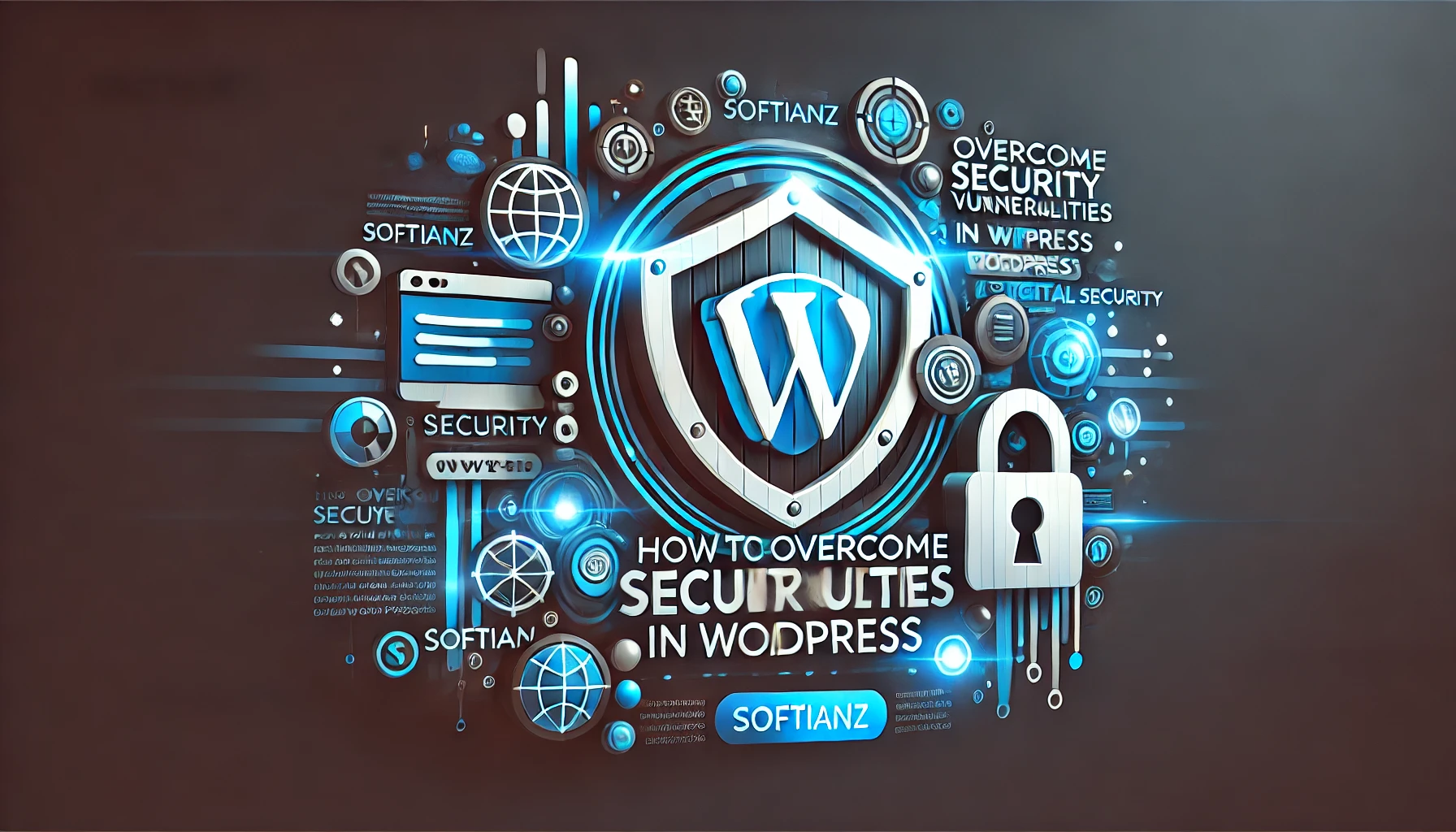WordPress is a powerful and flexible platform, but its popularity also makes it a prime target for hackers. Securing your WordPress site is crucial to protect your data, user information, and business reputation. In this blog post, we’ll cover the most common security vulnerabilities in WordPress and provide detailed steps to overcome them.
1. Keep WordPress Core, Themes, and Plugins Updated
Why It Matters: Updates often include patches for security vulnerabilities that have been discovered. Outdated versions of WordPress, themes, or plugins are among the most common entry points for hackers.
How to Implement:
- Enable Auto-Updates: You can enable automatic updates for the WordPress core, themes, and plugins. To enable auto-updates for plugins and themes, navigate to the Plugins or Themes page and select "Enable Auto-Updates" for each item.
- Regular Manual Checks: Even with auto-updates enabled, it’s good practice to manually check for updates, especially after a major WordPress release.
- Backup Before Updates: Always backup your site before applying updates to avoid data loss in case something goes wrong.
2. Use Strong Passwords and Two-Factor Authentication
Why It Matters: Weak passwords make it easier for hackers to gain access to your site. Two-factor authentication (2FA) adds an additional layer of security, requiring a second form of identification beyond just the password.
How to Implement:
- Strong Passwords: Use complex passwords that include upper and lower case letters, numbers, and special characters. Passwords should be at least 12 characters long.
- Password Management Tools: Use a password manager like LastPass or 1Password to generate and store strong, unique passwords for each of your accounts.
- Enable 2FA: Install a plugin like Google Authenticator or Authy to enable two-factor authentication. This adds a verification step via a mobile app or SMS, making unauthorized access more difficult.
3. Limit Login Attempts
Why It Matters: Brute force attacks involve trying multiple username and password combinations until the correct one is found. By limiting login attempts, you can significantly reduce the risk of such attacks.
How to Implement:
- Install a Security Plugin: Plugins like Limit Login Attempts Reloaded or WP Cerber Security allow you to limit the number of login attempts from a single IP address. After a set number of failed attempts, the IP is temporarily blocked.
- Custom Error Messages: Customize your login error messages so they don’t reveal whether the username or password was incorrect, making it harder for attackers to guess login details.
4. Secure Your WordPress Admin Area
Why It Matters: The WordPress admin area is the most sensitive part of your site, and if compromised, it can give attackers complete control.
How to Implement:
- Change the Default Admin Username: Many attacks target the default "admin" username. Create a new admin user with a unique name and delete the old one.
- Move the Login Page: Use a plugin like WPS Hide Login to change the default login URL from /wp-admin or /wp-login.php to something unique.
- IP Whitelisting: Restrict access to your admin area by allowing only certain IP addresses to log in. This can be done through your web hosting control panel or by adding rules to your .htaccess file.
5. Install a Security Plugin
Why It Matters: A comprehensive security plugin can help monitor your site for suspicious activity, block malicious traffic, and provide additional layers of security.
How to Implement:
- Popular Security Plugins: Install plugins like Wordfence, Sucuri Security, or iThemes Security. These plugins offer a range of features including malware scanning, firewall protection, and real-time threat monitoring.
- Regular Scans: Set up your security plugin to run regular scans of your site’s files and database. If any suspicious activity is detected, the plugin will notify you immediately.
6. Use HTTPS and SSL
Why It Matters: HTTPS encrypts the data transferred between your site and its users, protecting it from interception by attackers. SSL (Secure Sockets Layer) certificates are essential for e-commerce sites or any site that handles sensitive data.
How to Implement:
- Get an SSL Certificate: Most hosting providers offer free SSL certificates through services like Let’s Encrypt. Ensure your site has an SSL certificate installed.
- Force HTTPS: Use the Really Simple SSL plugin or add rules to your .htaccess file to force all traffic to use HTTPS.
- Check for Mixed Content: Ensure all elements on your site are served over HTTPS, not just the main pages. Tools like SSL Checker or the built-in browser console can help you identify and fix mixed content issues.
7. Regularly Backup Your Site
Why It Matters: In the event of a security breach, a recent backup can save you from losing data or having to start from scratch. Regular backups are your safety net.
How to Implement:
- Choose a Backup Plugin: Plugins like UpdraftPlus, BackupBuddy, or BackWPup allow you to automate backups and store them securely offsite (e.g., in cloud storage like Google Drive or Dropbox).
- Backup Schedule: Set up a backup schedule that matches the frequency of your site updates. Daily or weekly backups are ideal for most sites.
- Test Restores: Occasionally test your backup restores to ensure they work correctly. A backup is only useful if it can be successfully restored.
8. Disable File Editing and PHP Execution
Why It Matters: By default, WordPress allows administrators to edit theme and plugin files directly from the dashboard. If an attacker gains access, they could use this feature to inject malicious code.
How to Implement:
- Disable File Editing: Add the following line to your wp-config.php file to disable file editing: define('DISALLOW_FILE_EDIT', true);
Restrict PHP Execution: Use .htaccess rules to prevent PHP files from executing in directories where they shouldn’t be, like wp-deny from all
9. Implement a Web Application Firewall (WAF)
Why It Matters: A Web Application Firewall (WAF) filters out malicious traffic before it reaches your site, providing an additional layer of defense.
How to Implement:
- Cloud-Based WAF: Services like Cloudflare or Sucuri offer cloud-based WAFs that protect your site by filtering traffic before it even reaches your server.
- Plugin-Based WAF: Some security plugins, like Wordfence, include a WAF that operates directly on your server.
10. Monitor Your Site Regularly
Why It Matters: Continuous monitoring helps you catch security issues before they escalate. Regular checks can identify unusual activity, new vulnerabilities, or changes to your site that could pose a risk.
How to Implement:
- Security Audits: Perform regular security audits to review your site’s security measures. Tools like WPScan can help identify vulnerabilities in your WordPress setup.
- Activity Logs: Use plugins like WP Security Audit Log to keep track of user activity, including logins, changes to files, and more. This can help you quickly identify and respond to suspicious behavior.
Conclusion
Securing your WordPress site requires ongoing attention and proactive measures. By implementing the strategies outlined above, you can significantly reduce the risk of security vulnerabilities and protect your site from potential threats. Remember, the key to effective security is a multi-layered approach, combining strong passwords, regular updates, backups, and advanced security tools to safeguard your site.
If you’re ever unsure about how to implement these steps, consider consulting with a WordPress security expert to ensure your site is fully protected.

 By Arslan Zia
By Arslan Zia 







What are the most common security vulnerabilities in WordPress?
Common security vulnerabilities include outdated software, weak passwords, unprotected login areas, poorly coded plugins, and lack of HTTPS/SSL encryption.
How can I protect my WordPress site from hackers?
To protect your site, keep WordPress, themes, and plugins updated, use strong passwords, enable two-factor authentication, limit login attempts, and install a security plugin.
What should I do if my WordPress site is hacked?
If your site is hacked, immediately restore a clean backup, update all software, change all passwords, and scan your site with a security plugin like Wordfence or Sucuri. Consider consulting a security expert for further assistance.
How often should I back up my WordPress site?
It’s recommended to back up your WordPress site daily or weekly, depending on how frequently you update your content. Regular backups ensure you can quickly restore your site if something goes wrong.
Is it necessary to use a security plugin for my WordPress site?
While not mandatory, using a security plugin is highly recommended as it provides essential protection features like malware scanning, firewall protection, and real-time threat monitoring.